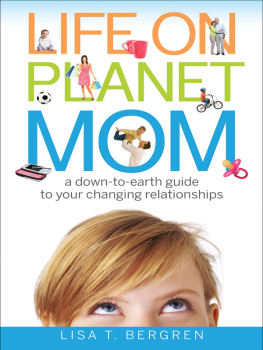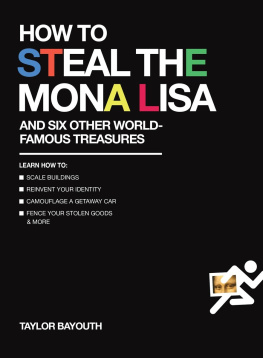

For my son, Daniel
WILMINGTON SQUARE BOOKS
An imprint of Bitter Lemon Press
First published in 2015 by
Wilmington Square Books
47 Wilmington Square
London WC1X 0ET
www.bitterlemonpress.com
Copyright 2015 Julian Spalding
All rights reserved. No part of this publication may be reproduced in any form or by any means without written permission of the publisher
The moral rights of the author have been asserted in accordance with the Copyright, Designs and Patents Act 1988
A CIP record for this book is available from the British Library
ISBN 978-1-908524-461
9 8 7 6 5 4 3 2 1
Designed and typeset by Jane Havell Associates
Contents
O ne of my earliest memories is of sitting on a quay at the seaside watching a stick floating on the water. The waves were passing below me, under my kicking legs I was still wearing short trousers but, to my great surprise, the stick wasnt carried along with them; it stayed exactly where it was, rising and falling as the waves rolled past. It seems to me now, looking back, that my life has been like that stick: time has rolled through me, like a wave, but I havent changed; Ive stayed me. Even now, despite the intervention of so many years, I feel Im that same young boy, who can slip easily into sensations of wonder.
I remember the thrill of watching a snails eyes growing out of its slimy back as it emerged from its shell, seeing beads of dew glinting rainbow colours in the sun at dawn, and gazing, with bewildered amazement, on a wintry night, up at the Milky Way plumed across the sky. This was easy to see sixty years ago, even in cities. Most extraordinary of all was the invisible, ceaseless and to a small boy about to start school terrifyingly unstoppable flow of time through everything.
Later, during my long career in art galleries and museums, my ambition was to help visitors make imaginative leaps back into the minds of the people who had created the rare treasures in my care. But I soon discovered how difficult that was. The problem was that the thoughts of the people who had carved an Egyptian god, modelled a Tang Dynasty horse or painted a Renaissance altarpiece were so far removed from the day-to-day concerns and interests of my twentieth-century public. I wrote about this challenge in The Poetic Museum Reviving Historic Collections. Later, in The Art of Wonder A History of Seeing, I tried to demonstrate how art has always been the product of our attempt to make sense of the mysteries around us. I treated the subject thematically, explaining what our ancestors had thought about the basic polarities of our everyday experience birth and death, day and night, up and down and demonstrated how the European Enlightenment dramatically altered our understanding of what had until then appeared to be fundamental facts of life.
Then it dawned on me that the way human beings have made sense of the world has in fact passed through a series of radical changes that can be tracked over time; surprisingly, many of these early world views still linger in our thoughts today, as ghostly images of bodies and trees, pyramids, altars and veils. I became increasingly interested in examining the light which our intelligence throws on the world, and our sense of the darkness beyond our grasp. The extensive writings on the nature of human consciousness by the physician, philosopher and polymath Raymond Tallis had a profound influence on the development of my thinking, and he gave me crucial, detailed advice about the books final form. The newspaper editor John McGurk suggested the title.
I am indebted to the late Sir Graham Hills, Principal of the University of Strathclyde, who encouraged me to write an unannotated book which said what I thought rather than spending all my time summarising others opinions. The qualifying insertions of maybe, possibly and might have been largely eschewed to avoid tedium, but also because this is a book about ideas, many of which will remain conjectural and almost all of which are allusive. The conclusions I have reached are based on fresh insights that have come to me from studying real objects in museums and visiting many historical sites around the world, not through second-hand experiences gained from other peoples writing, though a vast amount of reading has enabled me to reach these conclusions. I have included an extremely condensed bibliography, not because I necessarily agree with what these books have to say, but to highlight some of the key texts that have influenced a lifetimes research, and to enable my readers to find out more about the myriad aspects of human history covered by this short book.
My approach isnt academic, but an attempt to combine scholarship with poetry in a way that brings us closer to the thinking and feeling of people in the past who were, like us, full of love of life, fearful of death and just as bewildered by the meaning of everything. My ambition has been to take my reader on an imaginative journey back into the past, to show how our ignorance has persisted alongside our extraordinary leaps of understanding. This is, therefore, not a conventional history, but neither is it fanciful, for our world pictures have always been built on what we perceived to be common sense.
JULIAN SPALDING
2014

G reat works of art catch the popular imagination in ways that are difficult to express in words. The pyramids, Chartres Cathedral, the Taj Mahal and paintings such as the Mona Lisa all chime with our perception of the mystery of our existence, and although they were created in ages very different from our own, they resonate in our minds as if they had always existed. Weve built a world civilisation on these famous but elusive images; theyre the substantial evidence of our insubstantial heritage. But their meaning isnt beyond our grasp: its to be found in the history of our collective consciousness, in the way that our shared views about who and where we are have changed over time.
A world picture begins to take shape in the human mind when we go through that phase, common to all young children, of continually asking questions why the sky is blue, why the rain is thin, why living beings die until the grown-ups around us run out of explanations, and patience. Their replies might well affect our behaviour you dont dig into the earth, for example, if you believe that she is your mother, is very much alive, and will punish you if you hurt her. But soon we begin to realise that very few of the general, all-encompassing truths weve learnt make any difference to our immediate lives. So, in a hurry to grow up, we give up asking childish questions and start acting on adult assumptions. Thats when our thoughts begin to crystallise into an image of the world, a silky cocoon of comprehension which protects us from the dark, uncomfortable uncertainties beyond.
World pictures are shared images of common sense, that apparently firm surface on which we write the purported purpose of our lives, within the bounds of what we believe to be the facts of our existence. People have always realised that they didnt know how far this luminous arena of their lives extended: no one could conceive of the ends of the universe, and we still cant, despite all the remarkable discoveries of science. Nevertheless, we have always thought that we have a pretty good idea of where we are, of the shape of the place we inhabit. We call this realism; it gives us a firm basis for our lives, a ground to act on and grounds for action. And we have always assumed that this reality is an eternal truth.
Next page













